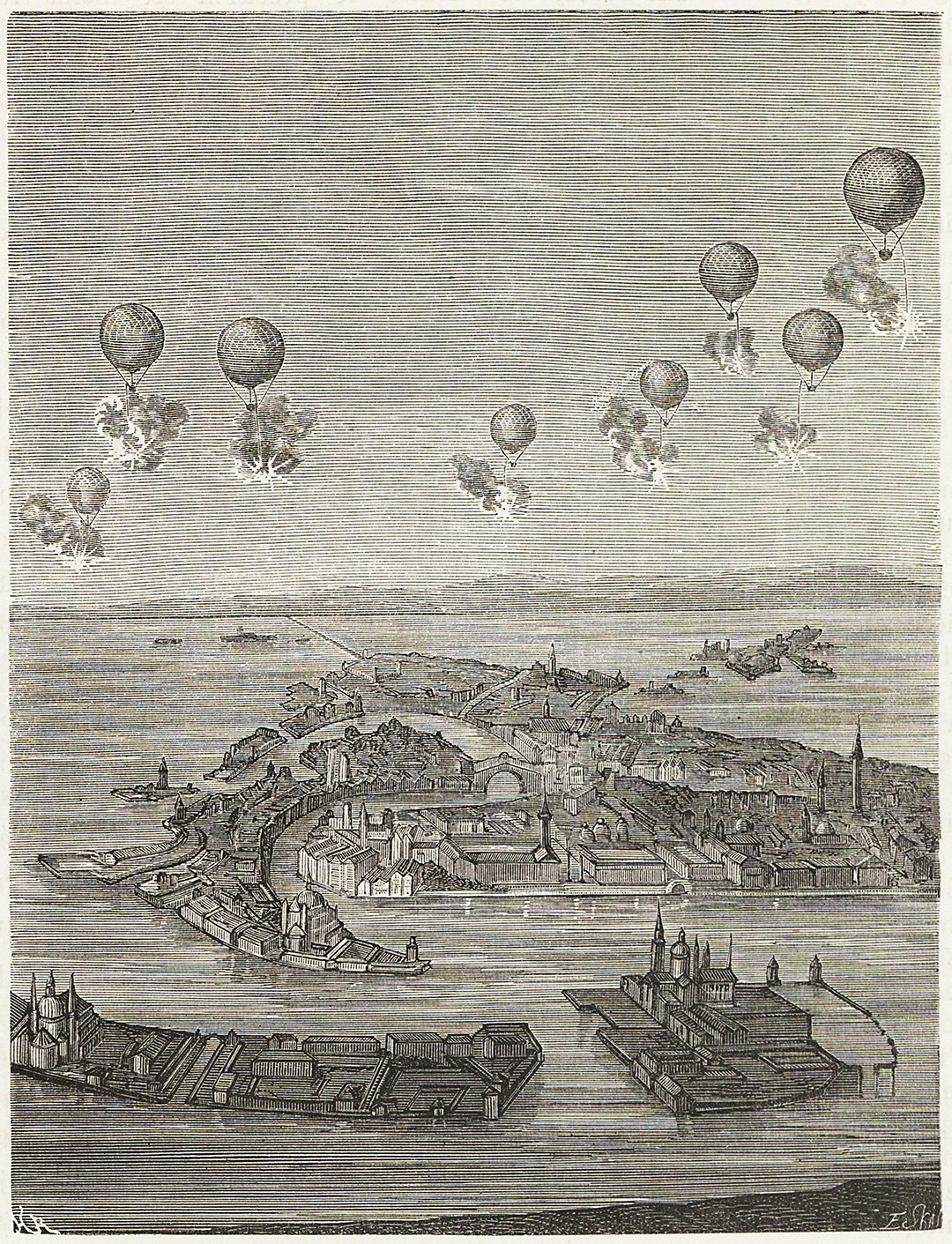Unmanned aerial attacks have come a long way from their humble origin, when an invading nation tied bombs to some 200 hot air balloons and then released them on the wind in the hope the balloons, fitted with time fuses, would drop the explosives on the city-state of its foe.
Depicted above, that first aerial bombardment, directed against Venice by forces of the Austrian empire, came during the 1848–49 First Italian War of Independence. Toward the end of that conflict, as Austria and France together crushed in turn the Italian kingdoms and states, Venice hung on as the independent Republic of San Marco. Embattled, in disarray and cut off from any potential sources of reinforcement, the city was a sitting duck for the Austrian fleet, prompting the latter to experiment with a novel tactic.
From the deck of the frigate Vulcano the Austrians noted a prevailing wind from the sea and figured a wave of paper balloons launched from the deck of the ship had a fair chance of drifting over Venice. Each balloon was filled with hot air, fitted with a time fuse and carried an explosive device.
According to contemporary accounts, the wind changed soon after the launch, and most balloons missed their target, though at least one bomb did detonate in the city. Whatever the psychological effect on the besieged Venetians, the damage was minimal, and the Austrians concluded their experiment with little fanfare, as Vulcano ran aground soon thereafter. Soon refloated, it was forced to return to port for repairs.
In the end, the Austrians bombarded Venice with conventional barrages of cannon and artillery fire. In May 1849 alone they launched more than 60,000 projectiles into the city. Ultimately, fears of disease and starvation led the Venetians to surrender to the Austrian yoke.
The use of unmanned balloon bombs reappeared as a tactic during World War II, when Japan sent hydrogen-filled balloons fitted with incendiary devices across the Pacific Ocean via the jet stream to the West Coast of the United States. Intended to spark large-scale forest fires and spread panic among the American populace, the “Fu-Go” bombs had little effect, despite being in a sense the first intercontinental weapons.

